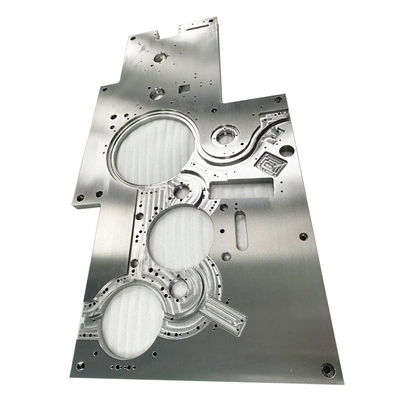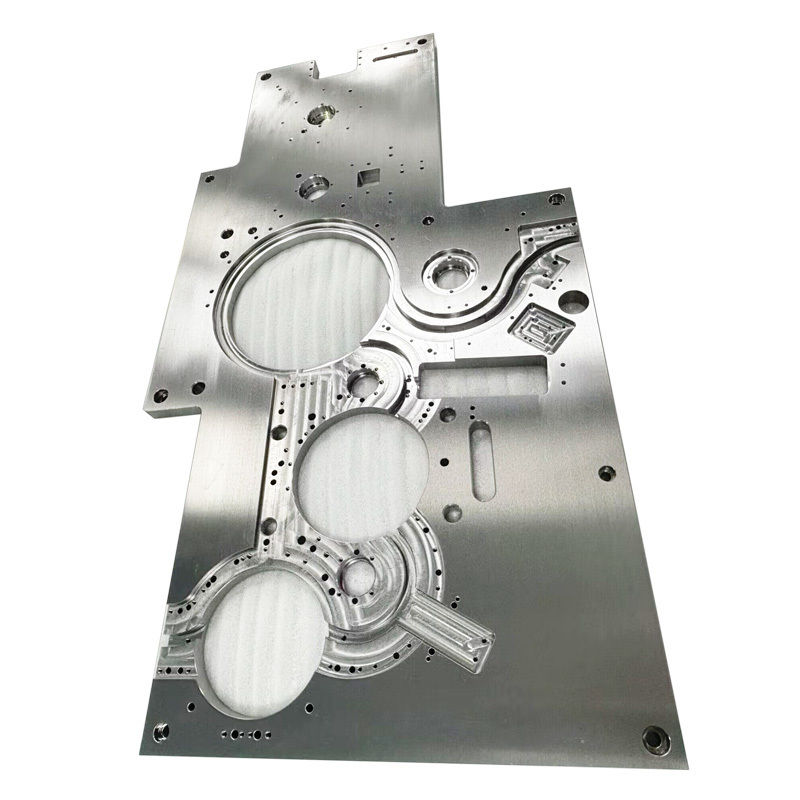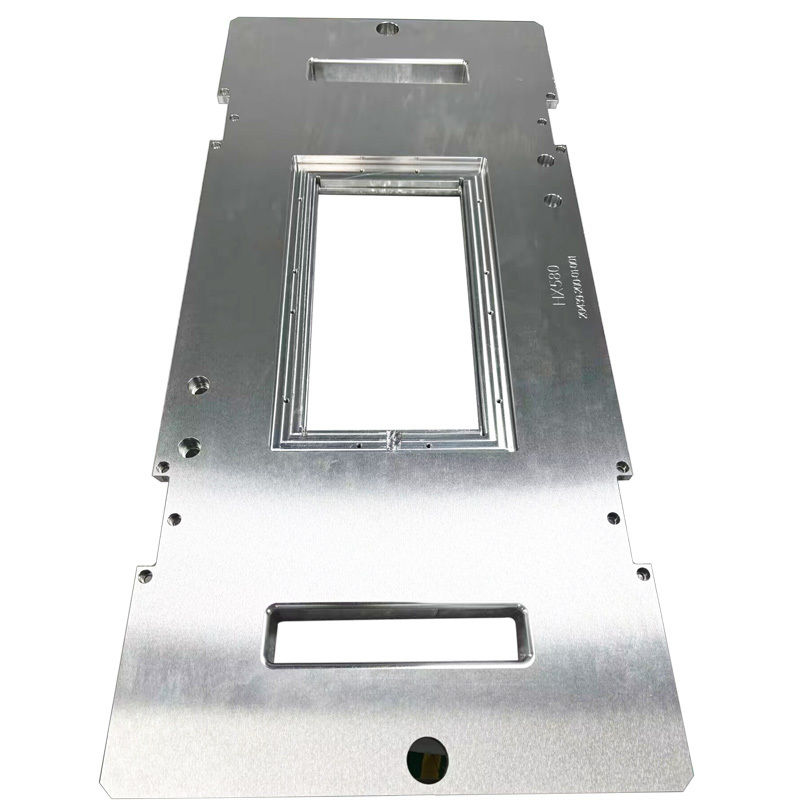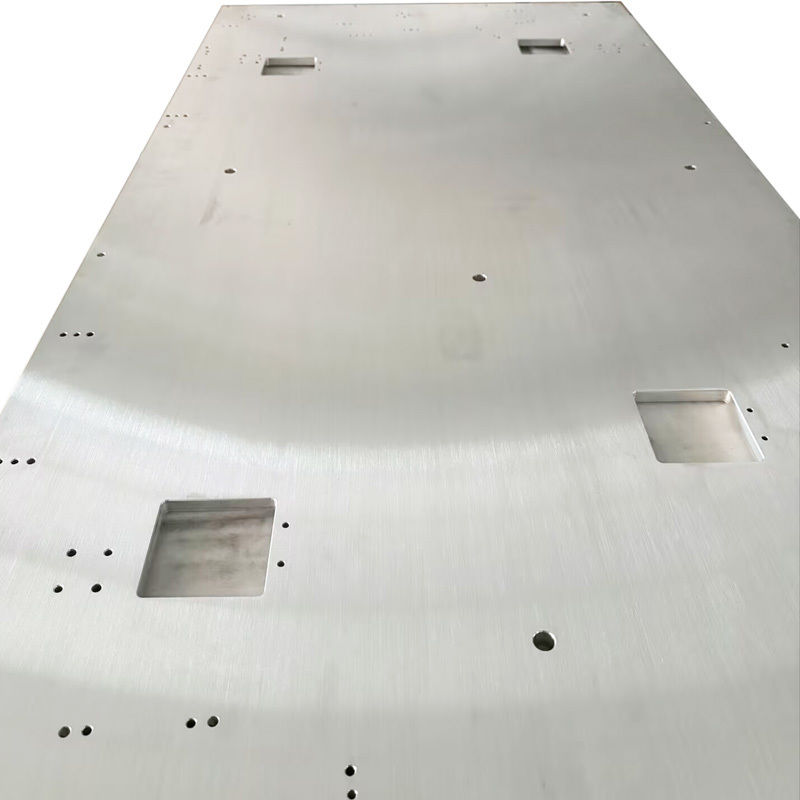-
ハイライト
保証付きのCNC加工センター
,精密CNCの製粉の部品
,工業用CNC加工サービス
-
製品名機械加工部品
-
表面処理あなたの要求として、陽極酸化、研磨、クロム
-
サービスOEM /ODM CNC加工
-
に適用します任意のOEM CNC加工部品
-
サンプルサンプル料金を支払う必要があります
-
許容範囲0.01〜±0.005mm
-
プロセスCNC加工+デバル
-
特徴耐久性と高精度
-
色カスタマイズされた色
-
受渡し時間サンプル注文の場合は3〜5日、バルクオーダーの10〜15日後
-
起源の場所広東
-
ブランド名HS
-
証明ISO9001,ISO14001
-
モデル番号HS-45
-
最小注文数量1ピース/ピース
-
価格USD,0.89-10.79,Piece/Pieces
-
パッケージの詳細内側と外側のカートン、または内側とepeフォームと外側のepeフォーム
-
受渡し時間7-15勤務日
-
支払条件L/C、D/A、D/P、T/T、Western Union、MoneyGram
-
供給の能力5000、ピース/ピース、月
CNCマシニングセンタ:United CNC MachiningとQuality CNC Machining Inc.
製造業は、高品質なコンポーネントを提供するために、高度な技術と信頼できるパートナーに依存しています。
|
ステンレス鋼: SS201、SS301、SS303、SS304、SS316、SS416など
|
|
鋼: 軟鋼、炭素鋼、4140、4340、Q235、Q345B、20#、45#など
|
|
真鍮: HPb63、HPb62、HPb61、HPb59、H59、H68、H80、H90など
|
|
銅: C11000、C12000、C12000 C36000など
|
|
鉄: A36、45#、1213、12L14、1215など
|
|
プラスチック: ABS、PC、PE、POM、Delrin、ナイロン、PP、PEI、Peekなど
|
|
CNCフライス加工範囲: 510 * 1020 * 500 mm(最大) 許容差: +/-0.01 mm
|
三軸CNC機械加工
旋盤、フライス盤、マシニングセンタなどの三軸CNC工作機械は、X(左右)、Y(前後)、Z(上下)の3つの軸に沿って移動できます。これらの機械は、切削工具、ドリル、またはフライスカッターなどの工具を動かすことによって機械加工タスクを実行します。
具体的には、三軸機械は水平方向(X-Y軸)に移動したり、垂直方向(Z軸)を調整して切削深さを制御できます。この柔軟性により、三軸CNC機械加工は製造業で広く使用されており、幅広い複雑な機械加工タスクを効率的かつ正確に完了できます。
五軸CNC機械加工
五軸CNC機械は、X、Y、Zの3つの軸(左右、前後、上下)に沿って移動するだけでなく、2つの追加軸(AとB)を中心に工具を回転させます。完全な五軸の可動範囲により、これらの機械は複数の角度で操作でき、滑らかな表面、正確な角度、および複雑な輪郭を持つ部品を正確に製造できます。
さらに、五軸機械は連続フライス加工が可能であり、処理時間を大幅に短縮し、ワークピースを自動的に回転させるため、手動介入の必要がなくなります。この非常に効率的な機械加工方法は、五軸CNC機械加工を現代の製造業においてますます重要にしています。
3軸 vs. 5軸: 長所と短所
これらの2種類のCNC機械の主な違いは、工具を移動できる方法の数にあります。3軸機械は3つの移動モードを持ち、5軸機械は5つの移動モードを持ちます。しかし、この一見小さな違いが大きな影響を与える可能性があります。以下に比較を示します。
| 要素 | 3軸 | 5軸 |
|---|---|---|
|
切削工具の動き
|
X、Y、Z軸に沿って
|
X、Y、Z軸に沿って、さらにA軸とB軸の回転軸に沿って
|
|
効率
|
良好
|
優れており、高速
|
|
工具交換
|
複雑な部品には複数のセットアップが必要(再クランプ、再配置など)
|
最小限、再配置なしでさまざまな角度から部品を加工可能
|
|
能力
|
限定的、複雑な形状、アンダーカット、または多面的な機能なし
|
ワークピースのすべての側面で深い切削、複雑な形状とアンダーカットが可能
|
|
精度
|
良好
|
優れている
|
|
操作の容易さ
|
最小限のトレーニングが必要、シンプルに使用およびプログラム(CNCプログラミングスキルが必要)
|
専門的なトレーニングと専門知識、より高度なCAD/CAMプログラミングが必要
|
|
コスト
|
25,000ドルから50,000ドル
|
80,000ドルから500,000ドル以上
|
|
メンテナンス/運用コスト
|
低い
|
高い
|
|
部品あたりのコスト
|
低い
|
高いが、より高速な生産により、より複雑な部品のコストを削減できる可能性がある
|
|
メンテナンスの必要性
|
可動部品が少ないため低い
|
高い、スムーズに動作させるには定期的なメンテナンスが必要
|
|
摩耗と損傷
|
なりにくい
|
追加の可動部品があるため、なりやすい
|
|
用途
|
自動車、航空宇宙、電子機器用のよりシンプルな部品(ハウジング、パネル、平面)
|
さまざまなサイズと形状、航空機エンジン部品、医療用インプラントとプロテーゼ
|
![]()
![]()
よくある質問:
Q: あなたは商社ですか、それともメーカーですか?
A: 私たちは工場です。
Q: 見積もりはどのように入手できますか?
A: 見積もりを受け取るには、IGS、DWG、STEPなどの形式の図面と詳細なPDFをお送りください。特定の要件がある場合は、リクエストに含めてください。参考のために専門的なアドバイスを提供します。
Q: 図面がない場合はどうすればよいですか?
A: そのような場合は、サンプルまたは図面を提供できます。ご提供いただいた図面の安全性と機密性は保証いたします。
Q: 納期はどのくらいですか?
A: 通常、部品の準備には7〜14日かかります。タイムリーな納品を確実にするためのシステムがあります。
Q: 製品の発送方法は何ですか?梱包の詳細は?
A: 少量注文の場合は、TNT、FEDEX、UPSなどの宅配便サービスと提携しています。大量注文の場合は、航空便または海上輸送オプションをご利用いただけます。標準的な梱包の詳細がありますが、特定の要件がある場合は、喜んでお手伝いさせていただきます。
Q: サンプルを提供していますか?追加料金はかかりますか?
A: はい、サンプルを提供できますが、追加料金がかかる場合があります。
Q: 支払い条件は何ですか?どのように支払うことができますか?
A: 支払い条件は、事前に50%のT/T(銀行振込)、残りの支払いは出荷前です。その他ご不明な点がございましたら、お気軽にお問い合わせください。





